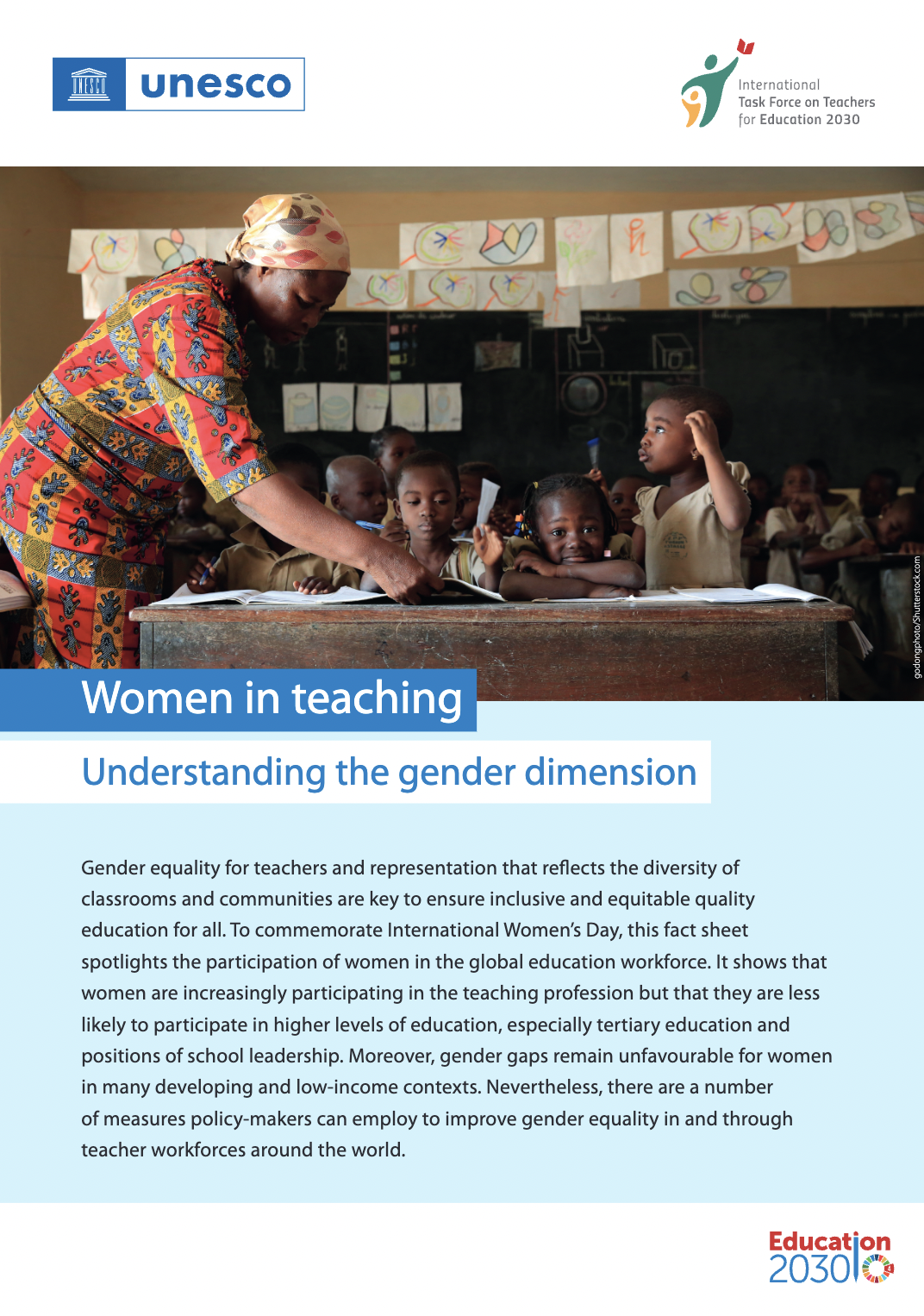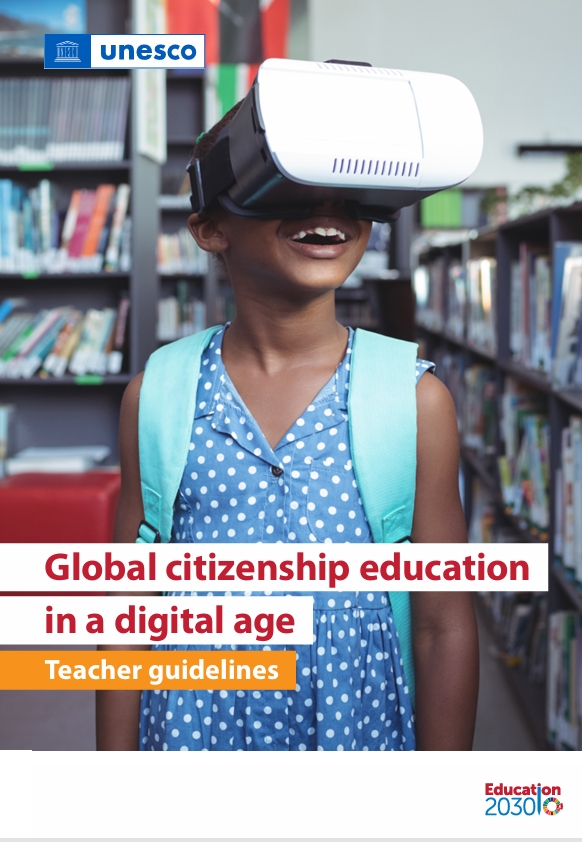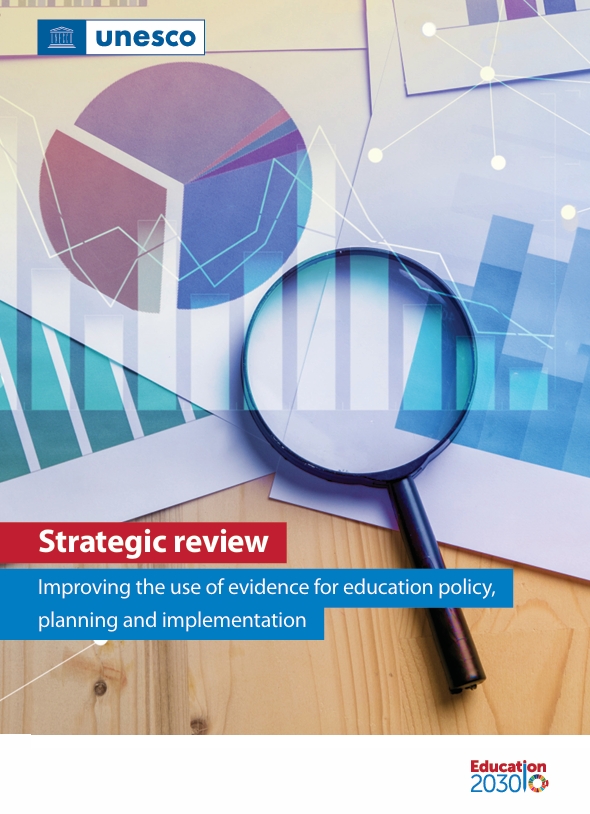Gender equality for teachers and representation that reflects the diversity of classrooms and communities are key to ensure inclusive and equitable quality education for all. To commemorate International Women’s Day, this fact sheet spotlights the participation of women in the global education workforce. It shows that women are increasingly participating in the teaching profession but that they are less likely to participate in higher levels of education, especially tertiary education and positions of school leadership. Moreover, gender gaps remain unfavourable for women in many developing and low-income contexts. Nevertheless, there are a number of measures policy-makers can employ to improve gender equality in and through teacher workforces around the world.
How does women’s participation in the global teaching workforce vary by level and how has it changed over time?
Women’s participation in teaching decreases relatively from lower to higher levels of education. In 2020, they represented the majority of teachers in pre-primary (94 per cent), primary (67 per cent) and lower-secondary (57 per cent) levels compared to half in upper-secondary education (50 per cent). The only level where women’s participation lags behind men, globally, is the tertiary sector where 44 per cent were female.
The expansion of primary education during the last 20 years was largely supported by the recruitment of female teachers. While the global primary net enrolment rate in primary education increased from 85 to 91 per cent during this period, the percentage of females teachers increased from 60 to 67 per cent, which is greater than in other levels. While more progress is needed, women also made modest gains in tertiary education where female participation increased from 39 to 44 per cent.
Read the full report on the UNESDOC website.






